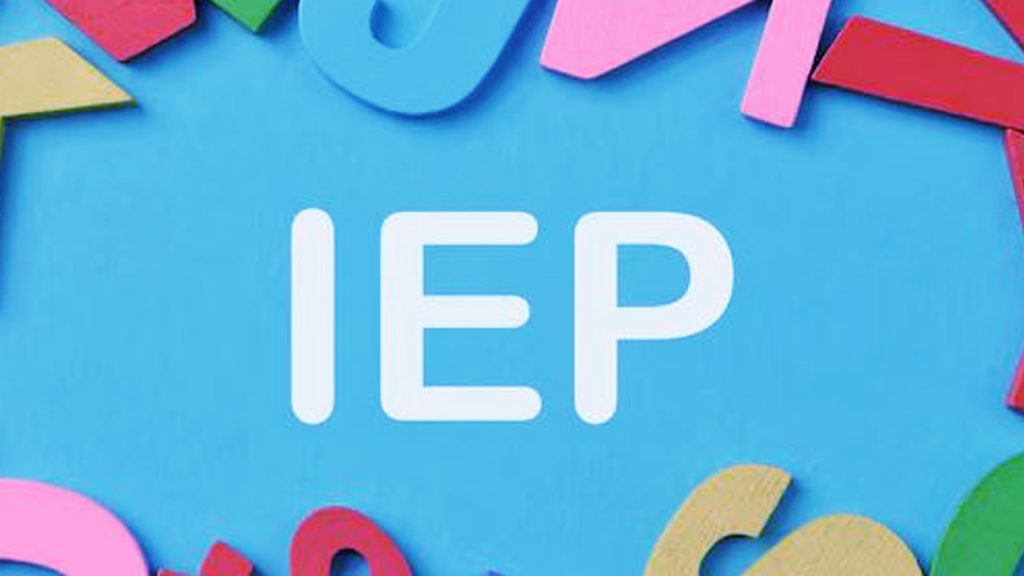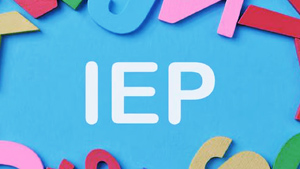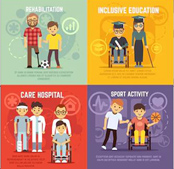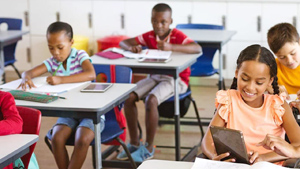Are you familiar with the term “IEP” in the context of special education? If not, let’s dive in and uncover what IEP stands for and its significance in the education of students with special needs.
IEP stands for Individualized Education Program. It is a personalized plan designed to meet the unique needs of students with disabilities or learning challenges. This program outlines specific goals, accommodations, and services required to support the student’s academic and developmental success.
In simple terms, an IEP serves as a roadmap to ensure that students receive the necessary educational support they need to reach their full potential. It is a collaborative effort involving educators, parents, and various specialists who work together to create an inclusive learning environment.

Photo by freepik
Understanding the ins and outs of IEPs is essential for parents and educators alike, as it can positively impact a student’s educational journey. By providing tailored strategies and accommodations, IEPs aim to bridge the gap and create an equal opportunity for students with special needs to thrive academically and socially.
Purpose and importance of IEPs in special education
IEPs play a crucial role in the field of special education. Their purpose is to ensure that students with disabilities or learning challenges receive an education that is tailored to their unique needs. By creating an individualized plan, IEPs provide a roadmap for educators to effectively support these students throughout their educational journey.
IEPs are important because they serve as a legal document that outlines the rights and entitlements of students with special needs. This ensures that their educational needs are met and that they have access to necessary accommodations and services. It also helps to establish clear communication and collaboration between parents, educators, and other stakeholders involved in the student’s education.
IEPs promote inclusivity in the classroom by creating a supportive environment that fosters the academic and social growth of students with special needs. By recognizing the individual strengths and challenges of each student, IEPs enable educators to implement targeted strategies and interventions that can maximize the student’s potential.
The purpose and importance of IEPs in special education lie in their ability to provide individualized support, ensure legal rights and entitlements, and foster inclusivity in the classroom.
Legal requirements of IEPs
To fully comprehend the significance of IEPs, it is essential to understand the legal requirements surrounding their implementation. The Individuals with Disabilities Education Act (IDEA) is the federal law that governs special education in the United States. It mandates that all eligible students with disabilities have the right to receive a free and appropriate public education (FAPE) in the least restrictive environment (LRE).
Under IDEA, the development and implementation of an IEP are crucial steps in ensuring that students with disabilities receive the necessary support and services. The law requires that an IEP be developed for each student with a disability who is found eligible for special education services.
The IEP must include various components, such as the student’s present levels of academic achievement and functional performance, measurable annual goals, accommodations and modifications, and a plan for evaluating progress. It must also specify the services and supports that the student will receive, including any related services such as speech therapy or occupational therapy.
By having a clear understanding of the legal requirements, parents and educators can ensure that the IEP is comprehensive, individualized, and aligned with the student’s unique needs.
Key components of an IEP
An IEP consists of several key components that work together to provide a comprehensive plan for a student’s education. These components address various aspects of the student’s academic, developmental, and social needs. Understanding each component is essential for effective IEP development and implementation.
Present Levels of Academic Achievement and Functional Performance (PLAAFP): This component describes the student’s current academic and functional abilities, including strengths and weaknesses. It serves as a baseline for setting goals and determining appropriate accommodations and modifications.
Annual Goals: IEPs must include measurable annual goals that are specific, measurable, attainable, relevant, and time-bound (SMART). These goals should be aligned with the student’s present levels of performance and address the areas in which the student needs improvement.
Accommodations and Modifications: Accommodations are changes made to the learning environment or instructional methods to support the student’s access to the curriculum. Modifications, on the other hand, involve changes to the curriculum itself, such as altered assignments or grading criteria. Both accommodations and modifications ensure that the student can participate and progress academically.
Services and Supports: This component outlines the specialized services and supports that the student will receive as part of their IEP. These may include related services like speech therapy or occupational therapy, as well as assistive technology, counseling, or behavioral interventions.
Transition Services: For students aged 16 and older, transition services are a crucial component of the IEP. These services focus on preparing the student for life after high school, including post-secondary education, employment, and independent living. Transition goals and activities are developed to help the student successfully transition into adulthood.
By addressing these key components, an IEP ensures that the student’s individual needs are met and that appropriate supports and services are provided.
Process of developing an IEP
The development of an IEP is a collaborative process that involves various stakeholders, including parents, educators, and specialists. It follows a systematic approach to ensure that the resulting plan is comprehensive, individualized, and aligned with the student’s needs.
Referral and Evaluation: The process begins with a referral, where a student is identified as potentially needing special education services. Evaluations are then conducted to assess the student’s strengths, weaknesses, and specific needs. This may involve assessments by psychologists, educators, speech therapists, and other specialists.
Eligibility Determination: Based on the evaluation results, a team consisting of parents, educators, and specialists determines whether the student is eligible for special education services. If eligibility is established, the team proceeds with the development of an IEP.
IEP Meeting: An IEP meeting is scheduled, bringing together parents, educators, specialists, and the student (if appropriate) to discuss the student’s needs and develop the IEP. This meeting allows for open communication and collaboration to ensure that all perspectives are considered.
IEP Development: During the IEP meeting, the team discusses the student’s present levels of performance, sets measurable goals, determines appropriate accommodations and modifications, and identifies necessary services and supports. The IEP is then documented, including all agreed-upon components.
Implementation and Review: Once the IEP is developed, it is implemented in the classroom. Progress is regularly monitored, and the IEP is reviewed at least annually to assess the student’s progress and make any necessary adjustments. The IEP team reconvenes to discuss the student’s growth and update the plan as needed.
By following this structured process, the development and implementation of an IEP can effectively address the unique needs of students with disabilities.
Collaborating with parents and other stakeholders in the IEP process
Collaboration among parents, educators, and other stakeholders is vital for the successful development and implementation of an IEP. By working together, they can ensure that the student’s unique needs are understood and addressed in a comprehensive manner.
Parents play a critical role in the IEP process as they possess valuable insights into their child’s strengths, challenges, and preferences. Their active participation helps to establish a partnership with educators and specialists, ensuring that the student’s voice is heard and their needs are met.
Educators, on the other hand, bring their expertise and knowledge of instructional strategies to the table. They work closely with parents to understand the student’s learning style, adapt the curriculum, and implement appropriate accommodations and modifications in the classroom.
Other stakeholders, such as school administrators, related service providers, and community resources, also contribute to the IEP process. Their involvement can provide additional support and resources to help meet the student’s needs.
Collaboration in the IEP process involves open and honest communication, active listening, and a shared commitment to the student’s success. By leveraging the expertise and perspectives of all stakeholders, the IEP can be tailored to meet the student’s unique needs effectively.
Common challenges and misconceptions about IEPs
While IEPs have proven to be valuable tools in supporting students with special needs, there are some common challenges and misconceptions that can hinder their effectiveness. Understanding these challenges and dispelling misconceptions is essential for ensuring that IEPs are implemented successfully.
One challenge is the lack of consistency in IEP implementation across schools and districts. This inconsistency can result in variations in the quality and comprehensiveness of IEPs, potentially impacting the level of support provided to students.
Another challenge is the limited resources and support available for IEP implementation. Schools may face budget constraints or a shortage of qualified professionals, making it challenging to fully meet the needs of students with disabilities.
Misconceptions about IEPs can also create barriers to their successful implementation. One common misconception is that an IEP is a fixed plan that cannot be changed. In reality, IEPs are meant to be flexible and responsive to the student’s evolving needs. Regular review and adjustments are essential to ensure that the plan remains effective.
Another misconception is that students with IEPs are solely focused on their disabilities and are unable to succeed academically. In reality, IEPs are designed to provide the necessary support and accommodations to help students reach their full potential. With the right resources and strategies in place, students with IEPs can achieve academic success and thrive in the classroom.
By addressing these challenges and misconceptions, schools and educators can work towards implementing IEPs more effectively, ultimately benefiting students with special needs.
Supporting students with IEPs in the classroom
Creating an inclusive and supportive classroom environment is key to ensuring the success of students with IEPs. Educators play a crucial role in implementing the strategies and accommodations outlined in the IEP and providing the necessary support to help these students thrive.
Here are some effective ways to support students with IEPs in the classroom:
- Differentiated Instruction: Tailor instruction to meet the diverse needs of students. Provide a variety of learning materials, methods, and assessments that accommodate different learning styles and abilities.
- Collaboration with Specialists: Work closely with related service providers, such as speech therapists, occupational therapists, or behavior specialists, to implement targeted interventions and support strategies. Regular communication and collaboration ensure that the student’s needs are consistently met.
- Individualized Accommodations and Modifications: Implement the accommodations and modifications outlined in the student’s IEP. These may include extra time for assignments or tests, preferential seating, visual aids, or assistive technology. Regularly assess the effectiveness of these accommodations and adjust as needed.
- Positive Behavior Support: Establish a supportive and positive classroom environment that promotes appropriate behavior and social skills. Implement behavioral interventions outlined in the student’s IEP and provide reinforcement and feedback to encourage positive behavior.
- Regular Progress Monitoring: Continuously monitor the student’s progress towards their goals outlined in the IEP. Collect data, analyze results, and make any necessary adjustments to ensure that the student is making meaningful progress.
By implementing these strategies and creating an inclusive classroom environment, educators can provide the necessary support for students with IEPs to succeed academically and socially.
Additional resources and support for IEP implementation
Implementing IEPs effectively requires access to resources and support systems that can enhance the quality of special education services. Here are some additional resources and support options that can aid in the successful implementation of IEPs:
Professional Development: Educators can benefit from ongoing professional development opportunities that provide training on effective strategies for supporting students with IEPs. This can include workshops, conferences, or online courses focused on special education.
Collaborative Learning Communities: Participate in collaborative learning communities, such as professional learning communities (PLCs) or support groups, where educators can share best practices, discuss challenges, and learn from one another’s experiences.
Parent Support Groups: Connect parents of students with IEPs to support groups or parent organizations where they can share their experiences, seek advice, and access valuable resources. These groups can provide emotional support and guidance throughout the IEP process.
Community Resources: Explore local community resources such as advocacy organizations, disability support services, or parent training centers. These resources can provide additional support, information, and training to parents and educators.
Technology Tools: Utilize technology tools and resources that can enhance the implementation of IEPs. This can include assistive technology devices, educational software, or online platforms that facilitate communication and collaboration among stakeholders.
By leveraging these additional resources and support systems, schools and educators can enhance the implementation of IEPs and improve outcomes for students with special needs.
Conclusion
IEPs play a critical role in supporting the educational journey of students with disabilities or learning challenges. By providing a personalized roadmap, IEPs ensure that students receive the necessary support and accommodations to reach their full potential.
Through collaboration among parents, educators, and other stakeholders, IEPs can be developed and implemented effectively. Understanding the legal requirements, key components, and challenges associated with IEPs is crucial for their successful implementation and positive impact on students.
By creating inclusive and supportive classroom environments, educators can provide the necessary support for students with IEPs to thrive academically and socially. Access to additional resources and support systems further enhances the implementation of IEPs and improves outcomes for students with special needs.
IEPs serve as a powerful tool that promotes inclusivity, equal opportunity, and the holistic development of students with disabilities in the field of special education.




